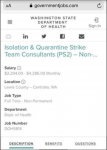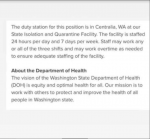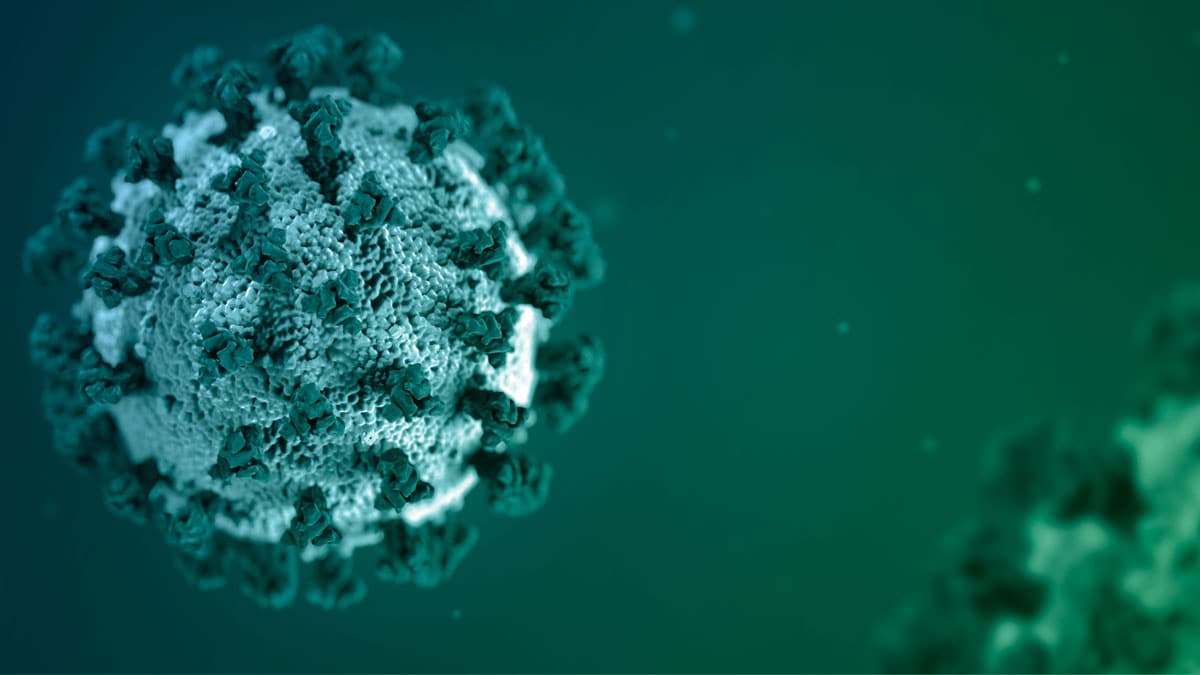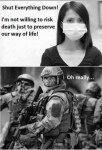2/2
Additional Considerations
The shielding approach outlines the general “logistics” of implementation –who, what, where, how. However, there may be additional logistical challenges to implementing these strategies as a result of unavailable commodities, transport restrictions, limited staff capacity and availability to meet the increased needs. The approach does not address the potential emotional, social/cultural, psychological impact for separated individuals nor for the households with separated members. Additional considerations to address these challenges are presented below.
Population characteristics and demographics
Consideration: The number of green zones required may be greater than anticipated, as they are based on the total number of high-risk individuals, disease categories, and the socio-demographics of the area and not just the proportion of elderly population.
Explanation: Older adults represent a small percentage of the population in many camps in humanitarian settings (approximately 3-5%
4,5), however in some humanitarian settings more than one quarter of the population may fall under high risk categories
13,14,15 based on underlying medical conditions which may increase a person’s risk for severe COVID-19 illness which include chronic kidney disease, obesity, serious heart conditions, sickle cell disease, and type 2 diabetes. Additionally, many camps and settlements host multiple nationalities which may require additional separation, for example, Kakuma Refugee Camp in Kenya accommodates refugees from 19 countries.
16
Timeline considerations
Consideration: Plan for an extended duration of implementation time, at least 6 months.
Explanation: The shielding approach proposes that green zones be maintained until one of the following circumstances arises: (i) sufficient hospitalization capacity is established; (ii) effective vaccine or therapeutic options become widely available; or (iii) the COVID-19 epidemic affecting the population subsides.
Given the limited resources and healthcare available to populations in humanitarian settings prior to the pandemic, it is unlikely sufficient hospitalization capacity (beds, personal protective equipment, ventilators, and staff) will be achievable during widespread transmission. The national capacity in many of the countries where these settings are located (e.g., Chad, Myanmar, and Syria) is limited. Resources may become quickly overwhelmed during the peak of transmission and may not be accessible to the emergency affected populations.
Vaccine trials are underway, but with no definite timeline. Reaching the suppression phase where the epidemic subsides can take several months and cases may resurge in a second or even third wave. Herd immunity (the depletion of susceptible people) for COVID-19 has not been demonstrated to date. It is also unclear if an infected person develops immunity and the duration of potential immunity is unknown. Thus, contingency plans to account for a possibly extended operational timeline are critical.
Other logistical considerations
Consideration: Plan to identify additional resources and outline supply chain mechanisms to support green zones.
Explanation: The implementation and operation of green zones requires strong coordination among several sectors which may require substantial additional resources: supplies and staff to maintain these spaces – shelters, IPC, water, sanitation, and hygiene (WASH), non-food items (NFIs) (beds, linens, dishes/utensils, water containers), psychosocial support, monitors/supervisors, caretakers/attendants, risk communication and community engagement, security, etc. Considering global reductions in commodity shortages,
17 movement restrictions, border closures, and decreased trucking and flights, it is important to outline what additional resources will be needed and how they will be procured.
Protection
Consideration: Ensure safe and protective environments for all individuals, including minors and individuals who require additional care whether they are in the green zone or remain in a household after the primary caregiver or income provider has moved to the green zone.
Explanation: Separating families and disrupting and deconstructing multigenerational households may have long-term negative consequences. Shielding strategies need to consider sociocultural gender norms in order to adequately assess and address risks to individuals, particularly women and girls.
18,19,20 Restrictive gender norms may be exacerbated by isolation strategies such as shielding. At the household level, isolating individuals and limiting their interaction, compounded with social and economic disruption has raised concerns of potential increased risk of partner violence. Households participating in house swaps or sector-wide cohorting are at particular risk for gender-based violence, harassment, abuse, and exploitation as remaining household members may not be decision-makers or responsible for households needs.
18,19,20
Social/Cultural/Religious Practices
Consideration: Plan for potential disruption of social networks.
Explanation: Community celebrations (religious holidays), bereavement (funerals) and other rites of passage are cornerstones of many societies. Proactive planning ahead of time, including strong community engagement and risk communication is needed to better understand the issues and concerns of restricting individuals from participating in communal practices because they are being shielded. Failure to do so could lead to both interpersonal and communal violence.
21,22
Mental Health
Consideration: Ensure mental health and psychosocial support
*,
23 structures are in place to address increased stress and anxiety.
Explanation: Additional stress and worry are common during any epidemic and may be more pronounced with COVID-19 due to the novelty of the disease and increased fear of infection, increased childcare responsibilities due to school closures, and loss of livelihoods. Thus, in addition to the risk of stigmatization and feeling of isolation, this shielding approach may have an important psychological impact and may lead to significant emotional distress, exacerbate existing mental illness or contribute to anxiety, depression, helplessness, grief, substance abuse, or thoughts of suicide among those who are separated or have been left behind. Shielded individuals with concurrent severe mental health conditions should not be left alone. There must be a caregiver allocated to them to prevent further protection risks such as neglect and abuse.
Summary
The shielding approach is an ambitious undertaking, which may prove effective in preventing COVID-19 infection among high-risk populations if well managed. While the premise is based on mitigation strategies used in the United Kingdom,
24,25 there is no empirical evidence whether this approach will increase, decrease or have no effect on morbidity and mortality during the COVID-19 epidemic in various humanitarian settings. This document highlights a) risks and challenges of implementing this approach, b) need for additional resources in areas with limited or reduced capacity, c) indefinite timeline, and d) possible short-term and long-term adverse consequences.
Public health not only focuses on the eradication of disease but addresses the entire spectrum of health and wellbeing. Populations displaced, due to natural disasters or war and, conflict are already fragile and have experienced increased mental, physical and/or emotional trauma. While the shielding approach is not meant to be coercive, it may appear forced or be misunderstood in humanitarian settings. As with many community interventions meant to decrease COVID-19 morbidity and mortality, compliance and behavior change are the primary rate-limiting steps and may be driven by social and emotional factors. These changes are difficult in developed, stable settings; thus, they may be particularly challenging in humanitarian settings which bring their own set of multi-faceted challenges that need to be taken into account.
Household-level shielding seems to be the most feasible and dignified as it allows for the least disruption to family structure and lifestyle, critical components to maintaining compliance. However, it is most susceptible to the introduction of a virus due to necessary movement or interaction outside the green zone, less oversight, and often large household sizes. It may be less feasible in settings where family shelters are small and do not have multiple compartments. In humanitarian settings, small village, sector/block, or camp-level shielding may allow for greater adherence to proposed protocol, but at the expense of longer-term social impacts triggered by separation from friends and family, feelings of isolation, and stigmatization. Most importantly, accidental introduction of the virus into a green zone may result in rapid transmission and increased morbidity and mortality as observed in assisted care facilities in the US.
26
The shielding approach is intended to alleviate stress on the healthcare system and circumvent the negative economic consequences of long-term containment measures and lockdowns by protecting the most vulnerable.
1,24,25 Implementation of this approach will involve careful planning, additional resources, strict adherence and strong multi-sector coordination, requiring agencies to consider the potential repercussion among populations that have collectively experienced physical and psychological trauma which makes them more vulnerable to adverse psychosocial consequences. In addition, thoughtful consideration of the potential benefit versus the social and financial cost of implementation will be needed in humanitarian settings.
*Specific psychosocial support guidance during COVID-19 as specific subject areas are beyond the scope of this document.
CDC provides credible COVID-19 health information to the U.S.

www.cdc.gov












